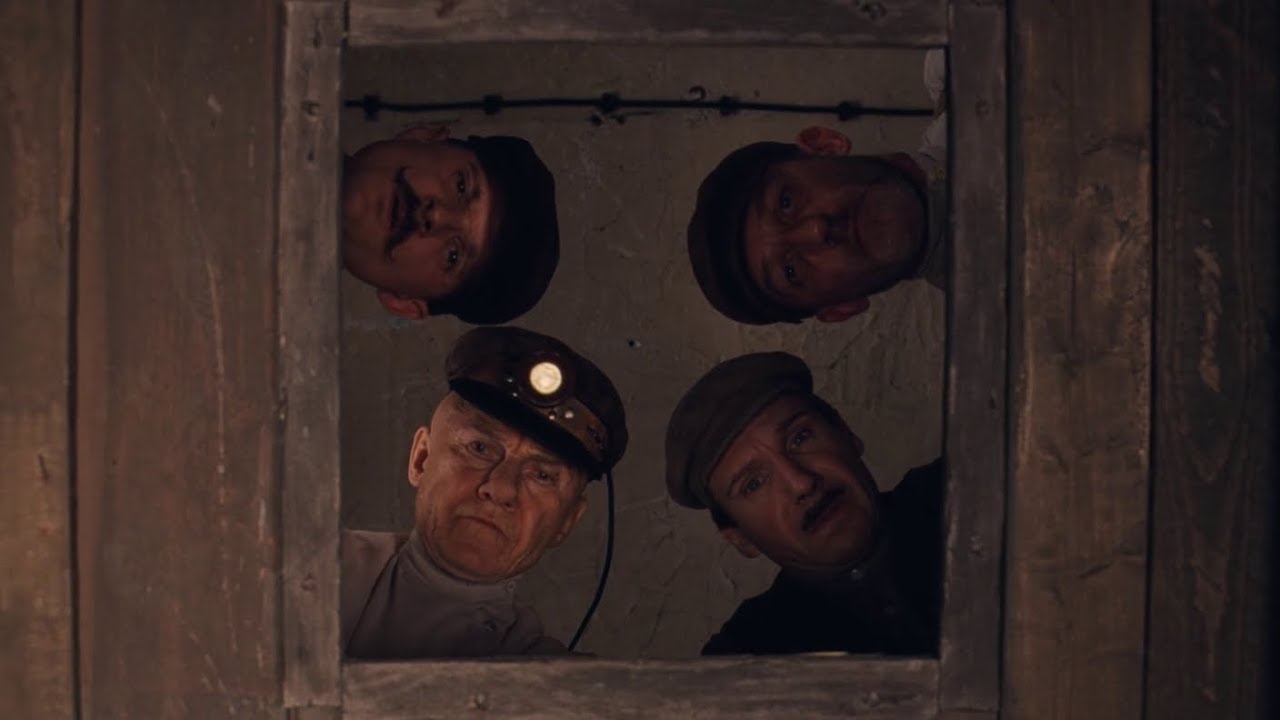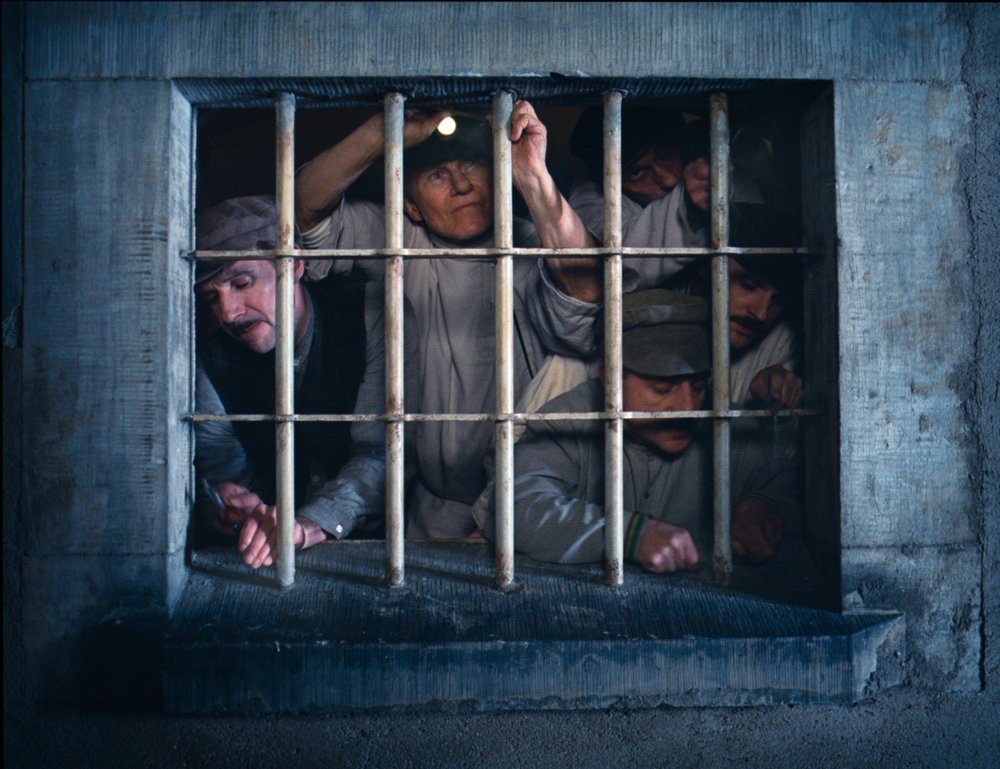The sequence in which M. Gustave and his fellow inmates escape from checkpoint-19 (chapter 21) is made so that the information that needs to be shown to the audience is shown to them, and then the direct/immediate consequences of said thing are shown. This is apparent when the camera pans from the site of a lone van, silently implying to the audience that it is there to be used as an escape vehicle, a shot of Zero clocking into a manhole, showing that the escape is already underway.
One recognisable feature of Wes Andersons direction in his films is perfectly symmetrical shots. These break the rule-of-thirds, and make the image perfect and almost like a painting. It is done in this sequence to bring the a button perfectly into centre frame, where the audiences attention will be undivided and only on it.

Another classic and commonly used method of cinematography by Wes Anderson is crab shots, frequently used in the Grand Budapest Hotel to follow characters, even when they are not in-shot, and are behind a wall or something. This is most likely done to keep the viewers attention constantly on the important vents happening, and reminding us that the characters are still the predominant focus of this scene. It also avoids cutting, as seen when the camera crabs right to reveal a dumbwaiter, and then left just afterwards to show a door, and then the same after that to show a group of men running.
Once again our attention is brought to a ladder by it being placed directly centre-frame. Theres also an example of Andersons stylistic unconventional directing when he breaks the 180 degree rule. But then a shot-reverse-shot is done to establish that one of the escaping prisoners is making eye-contact with a prisoner in his cell.

A wide-shot is shown after this, into which the characters enter frame. However, the whole sequence contains less wide and extreme long-shots than the rest of the film, probably done to create the feeling of claustrophobia in the prison. After a 90 degree pan and a dolly, a wide-shot is used to show the size of the prison wall compared to the escapees.
A rare birds-eye-view shot then occurs not emphasise the size of the checkpoint, and then one of the only extreme wide-shots is done to create a change in atmosphere, since we are now outside, and to show how small the escaping prisoners are in comparison to the massive prison.

Lighting is also used particularly in this sequence, usually to bring the viewers eye towards a particular area, such as a path, button and vent. The prisoners are then shown looking down from this vent into the guards’ quarters, in a worms-eye-view. During the ensuing violence the camera is kept on this same shot to record the reactions of the onlooking escapees, and then the aftermath of the fight is shown in a birds eye view, framed symmetrically, as per usual with Wes Anderson, through the trapdoor.
The sequence expertly combines lighting, crab shots and panning to avoid cutting, symmetrical shots and wide and long-shots to portray a carefully planned escape sequence.
Lots of good detail here, Finlay. Thanks for keeping up…
LikeLike